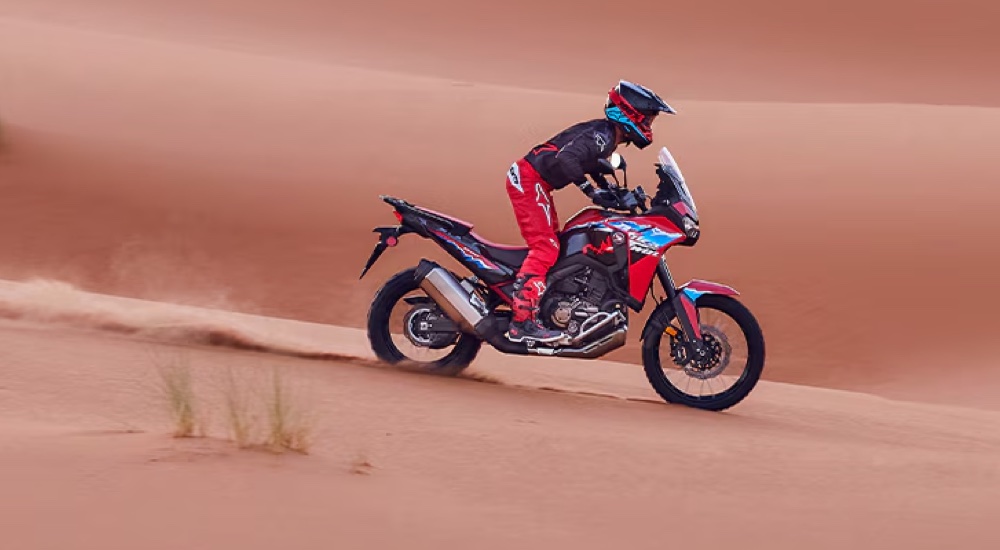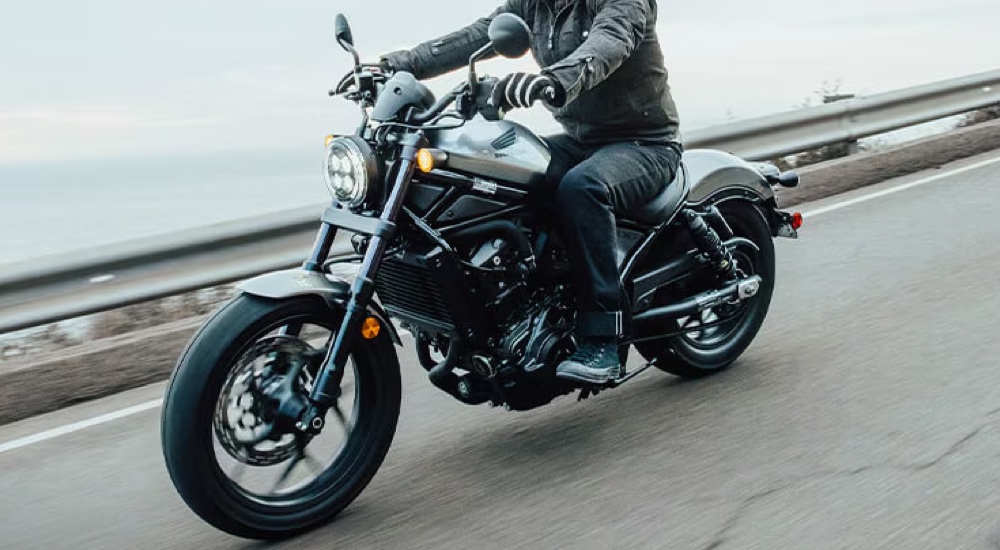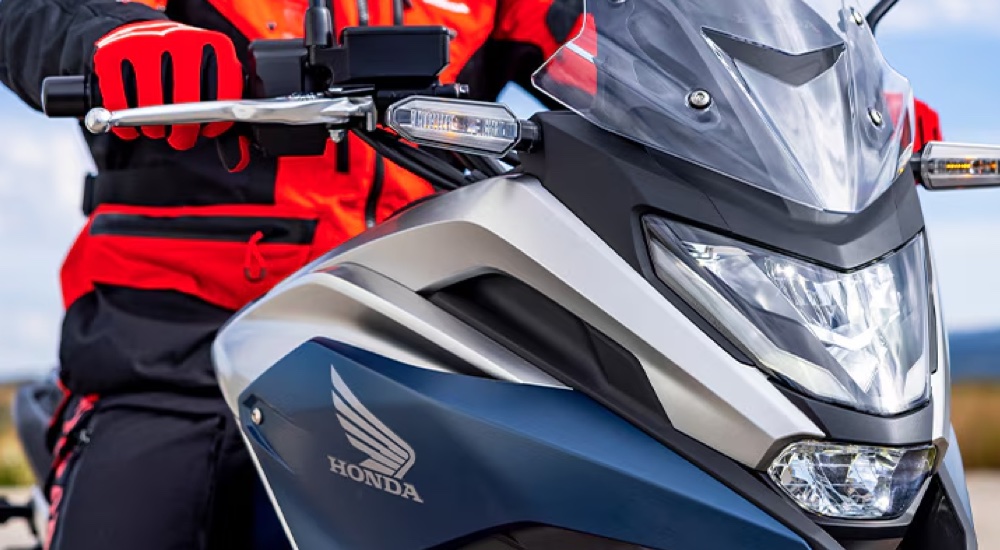There’s a learning curve for riders climbing into the saddle for the first time, so investing in a bike like a used Honda motorcycle for sale is a wise purchase. As a novice rider, I can attest to the value of learning on a used bike after dropping my husband’s BMW within minutes of my first lesson. Even with incredible patience, he cringed and had me on a used Honda that afternoon. Dropping a used bike isn’t exactly a walk in the park, but knowing it’s already broken in and you aren’t the first to put a dent or ding in the paint is easier on the heart and often the wallet.
Getting behind the handlebars of a used Honda motorcycle also offers another type of appeal because of Honda’s revolutionary automatic dual-clutch transmission (DCT). The DCT transforms your experience in the saddle by lessening the learning curve of navigating the clutch and shifting gears. How exactly does it work? How does it change your riding experience, and what are the benefits? It’s time to find out.
Redefining the Ride
For decades, riding a motorcycle has required mastering the intricate balance of engaging the clutch and shifting gears to optimize the bike’s performance without stalling the engine. While it sounds easy on paper, the choreography can be challenging to master for riders with limited experience with a manual transmission. In one sense, you’re listening to how the engine sounds and are keenly aware of its responsiveness, knowing when to engage the clutch and shift into a higher or lower gear. Veteran riders accomplish the task without a second thought, shifting gears, rounding corners, and tackling challenging terrain as naturally as breathing. New riders looking for that skill and comfort envy experienced riders who do it without thinking.
Honda found a way to level the proverbial playing field in 2010 when it debuted the world’s first dual-clutch transmission on a motorcycle. For Honda, the goal was simple: to give more people the opportunity to enjoy riding by using innovative technologies. Coincidentally, Honda’s DCT transmission has expanded the riding community by shortening the learning curve of mastering a manual transmission for new riders while also appealing to veteran riders looking for a new, transformative experience in the saddle.

Manual or Automatic? The Basics of the Dual-Clutch Transmission
The DCT debuted in 2010 on the Honda VFR1200F. The transmission is a hybrid of sorts, blending the responsiveness and efficient power delivery of a manual transmission with the convenience of an automatic. Honda accomplishes this incredible feat with one goal: to make the bike an extension of the rider, otherwise known as “Jinba Ittai.”
A Honda motorcycle with a DCT becomes an extension of your body because the bike’s performance is seamless. You don’t have to think twice about engaging the clutch or shifting gears and instead can rely on the DCT to optimize the bike’s performance in any condition. Most notably, the DCT accomplishes this without taking away the appeal of a manual transmission, the power of acceleration only experienced when shifting gears, at least until now.
The DCT offers that manual-like responsiveness because it has the same general design as a manual transmission. However, the clutches and the process of shifting gears are automated, leaving your focus on the road ahead and the world around you. It’s a transformative experience that gives you the best of both worlds, freeing up your focus without compromising the performance and handling expected of a two-wheeled Honda powerhouse.
Reaping the Benefits of a Dual Clutch Transmission
With the DCT, Honda challenges riders to think outside the box and beyond the norm of engaging a clutch and shifting gears. Manual transmissions no longer define the industry, and Honda proves as much with the DCT, leveling the playing field and opening the incredible realm of riding to more people regardless of experience. This is a significant push in the right direction for building a stronger and more diverse riding community. Still, owning a Honda powerhouse with a dual-clutch transmission has many other benefits.
Seamless Power Delivery
There’s no question that the DCT offers seamless power in any condition because the transmission is designed to respond automatically and optimally. This uninterrupted stream of power is a remarkable shift away from the lag when you have to disengage the clutch and shift gears. As a result, you can expect a smoother ride, easier maneuvering at low speeds, and no fear of stalling the bike in heavy traffic, at stop signs or stop lights, or in parking lots.
Freedom to Focus and Enjoy the Ride
Think about riding a bike with a manual transmission and how your senses are heightened. You’re not only focusing on the road and enjoying the scenery but also constantly monitoring the traffic conditions and listening to the engine to know when you need to engage the clutch and shift gears, whether slowing down or accelerating. It’s a balancing act that requires incredible focus.
Honda’s DCT doesn’t eliminate the need to focus on the ride, but it does give you the freedom to focus elsewhere than on what gear you’re in. The automatic transmission does the heavy lifting for you, shifting gears as needed based on the bike’s speed and your input on the throttle and brakes. Because of this, the DCT offers a simpler experience in the saddle, a better connection to the road, and the freedom to thoroughly enjoy the ride and the scenery.
The Feel of a Manual Transmission at Your Fingertips
While the DCT automates your ride, it doesn’t entirely eliminate your control over how your Honda performs. Instead, Honda puts the feel of a manual transmission at your fingertips by adding paddle shifters and selectable ride modes. Ride modes like Touring, Sport, and Manual let you tailor the transmission’s responsiveness to the condition and your riding preferences, acting like the drive modes you’d find in an automobile. The paddle shifters take this customization to the next level, letting you choose Manual Mode to shift gears via the paddles at your fingertips. This provides the ability to anticipate what gear you’ll need for the next turn or hill that a manual transmission has, rather than waiting for the automatic transmission to respond to control inputs you’ve already made.
Incredible Durability and Longevity
Honda introduced the dual-clutch transmission in 2010 and has consistently updated its design over the years. Today, the DCT boasts the longevity and durability expected of any component with the Honda name. Its steel gears are incredibly tough and efficient. The absence of a torque converter and a drive belt eliminates the possibility of slipping, breaking, or burning up the belt. Because of this, the DCT is easier to maintain and incredibly long-lasting.
A New Way to Ride
Honda proves that riders can have the best of both worlds beyond engaging the clutch and shifting gears. The DCT automates the process without compromising the thrill of acceleration or responsiveness when shifting gears. Instead, the DCT does the work for you, offering a smooth delivery of power and the freedom to enjoy every moment in the saddle.
Fortunately, finding a used Honda motorcycle with a DCT is easy because of the transmission’s long tenure in the Honda fleet. Over the years, Honda has expanded its DCT offerings to models like the NC750X, iconic adventurers like the Africa Twin, legends like the Rebel 1100, and luxurious touring bikes like the Gold Wing. This wide availability makes it easy to find a Honda bike that fits your style and offers the smooth-shifting performance only available with Honda’s world-class dual-clutch transmission.





